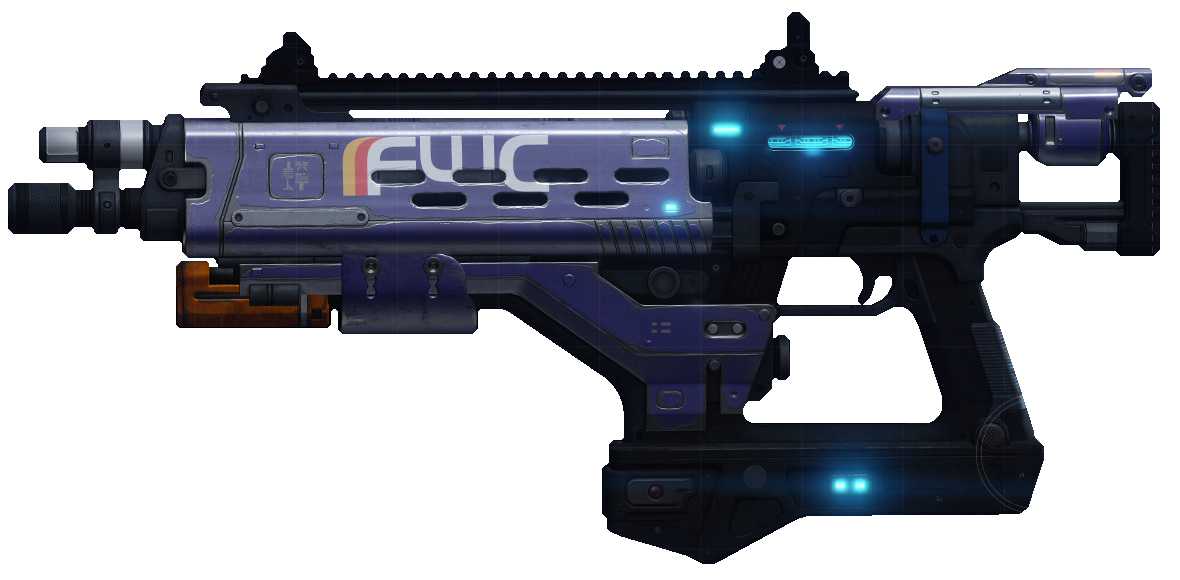Usually, when I talk about video games with my friends, I tend to just give them a basic “is it good or not” breakdown. I am not very articulate in person. On paper I gush, and holy crap does Destiny have a lot to gush about. Firstly, there’s the art style. My first impression of the game was “this looks like a game made of all of the concept art from all the other games out there.” Each faction is visually distinctive, as are the three player-character classes. It’s a very colorful game world, with even the Moon (famous in real life for mostly being all one uniform color) having genuine style and avoiding monotony. Most importantly, they all fit into the same universe. The overall tone of Destiny is at once unique and instantly familiar. It reminds me of Arthur Clarke’s Third Rule of Prediction: “Sufficiently advanced technology is indistinguishable from magic.” It’s the aesthetic you have to end up with when your characters teleport into their one-man spaceship, fly to the moon by way of wormhole, teleport out and start shooting at four-armed aliens with REVOLVERS. The incredible thing is that I didn’t realize how anachronistic it all seems until I wrote the previous sentence, because of how well it all gels together. The real-world tech blends seamlessly into the future-tech blends seamlessly into the technology that seems like magic. Here, you can see an example of what I mean, just from looking at the guns:
“Seems like magic” might as well be the game’s byword, with various class and enemy descriptions having more in common with a fantasy game than with the harder sci-fi Bungie is known for. From Warlocks and Wizards to the Hive and the Cabal, the game feels like a mashup of the two genres, and it’s a testament to Bungie’s art department that they blend so well.
From a purely technical standpoint, the game is stellar. It absolutely oozes polish, from the slick (oddly PC-style) inventory that smartly borrows from Diablo to the gorgeous maps that serve as your mission-select screen.
As you can see, they're equal parts Age of Sail parchment ocean maps and futuristic mathematical star charts, further extending the anachronistic motif that is the backbone of the game’s art style.
Now, all of that is nice, but in a first-person shooter all the beautiful art and shiny graphical technology you can pack into a DVD just serve as window dressing to make the business of shooting dudes more pleasant. All the gloss and paint in the world won’t help you if the thing you’re painting is ugly, but Destiny’s core structure (the gunplay, and the kinaesthetics (insert link to errant signal) of moving around in the world) is rock solid. If you’re going to build a game around exploration of a wide-open map and punctuate it with claustrophobic, trench-and-tunnel gunfights, these are the movement and shooting models to do it with. Every movement is smooth and fluid, with Bungie’s signature high-flying leaps augmented by a series of double-jump mechanics for added mobility. When you can reliably pull off head shots while hurling yourself through the air, you know you’ve got a winner.
While the control scheme owes a great deal to Call of Duty’s cover-based, iron-sights gameplay, the increased mobility makes it feel like a cross between that series and Bungie’s own Halo series, transitioning smoothly into a three-way (go on, giggle. I know you want to.) with Metroid Prime when the player encounters one of the bullet-sponge bosses that cap off so many story missions and “strikes” (Destiny’s equivalent to other MMO’s large-group raids). As fun as the game is when played solo, it’s obvious Bungie intended this to be played with friends, and even pick-up groups make for fun, engaging adventures, with the shared overworld leading to some awesome team-ups with total strangers. The “public event” model City of Heroes and other MMOs pioneered makes an appearance here, with random high-intensity encounters with huge groups of regular enemies or a supercharged boss enemy appearing once every few hours of game time. (Participation is optional, but success rewards all participants with rewards that almost never appear anywhere else.) There’s nothing like patrolling the Moon and having the sky suddenly go dim, your AI companion (the Ghost) shout something to the order of “Oh, CRAP.” and suddenly find yourself surrounded by enemies, only to watch as your fellow players hurl themselves into the fray around you, with guns and super-moves blazing. (The super moves deserve more attention. Few things are as satisfying as unleashing these shiny bundles of particle effects and annihilation.)
Destiny is gorgeous, and a BLAST to play, no matter what you’re fighting, so much so that it almost hurts me to have to write about all the NON-gameplay things it gets so wrong. See you next time for Destiny - The Bad Bits!




No comments:
Post a Comment